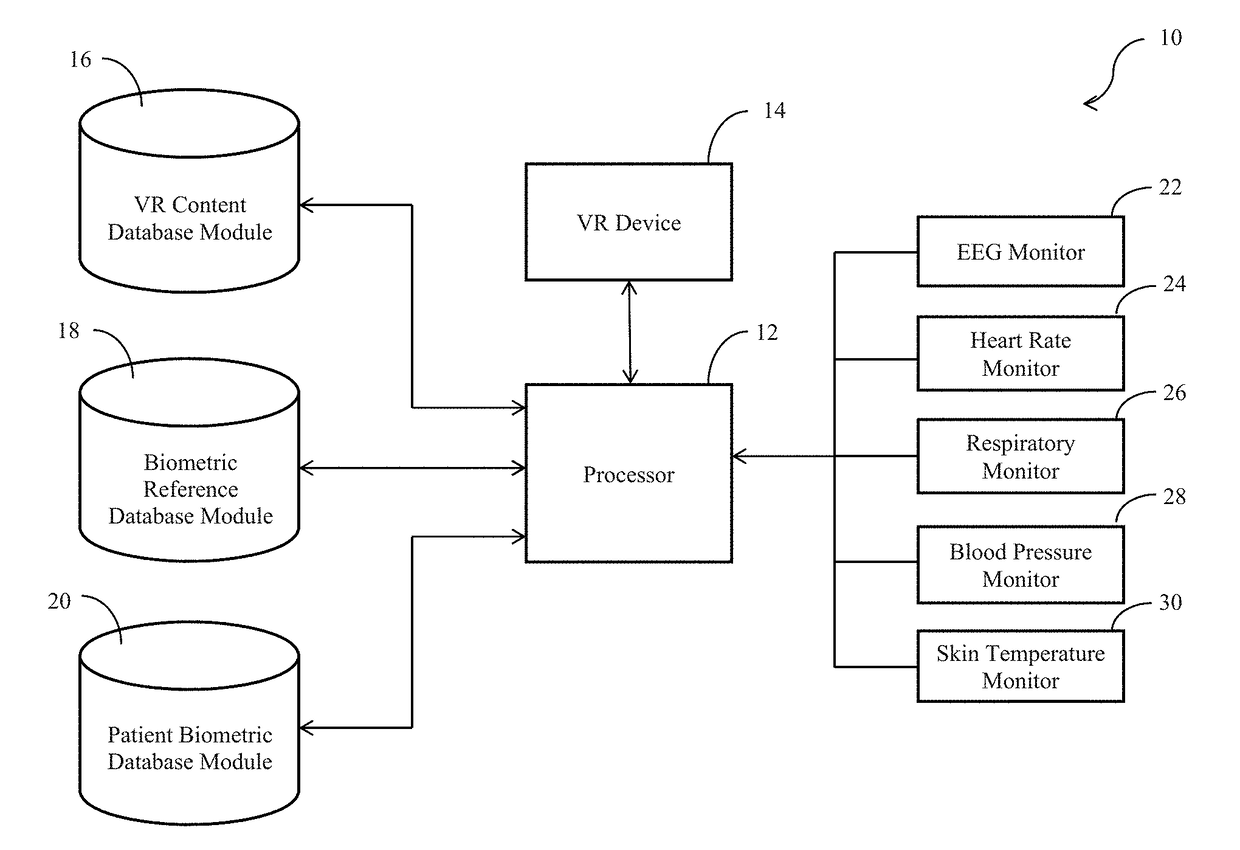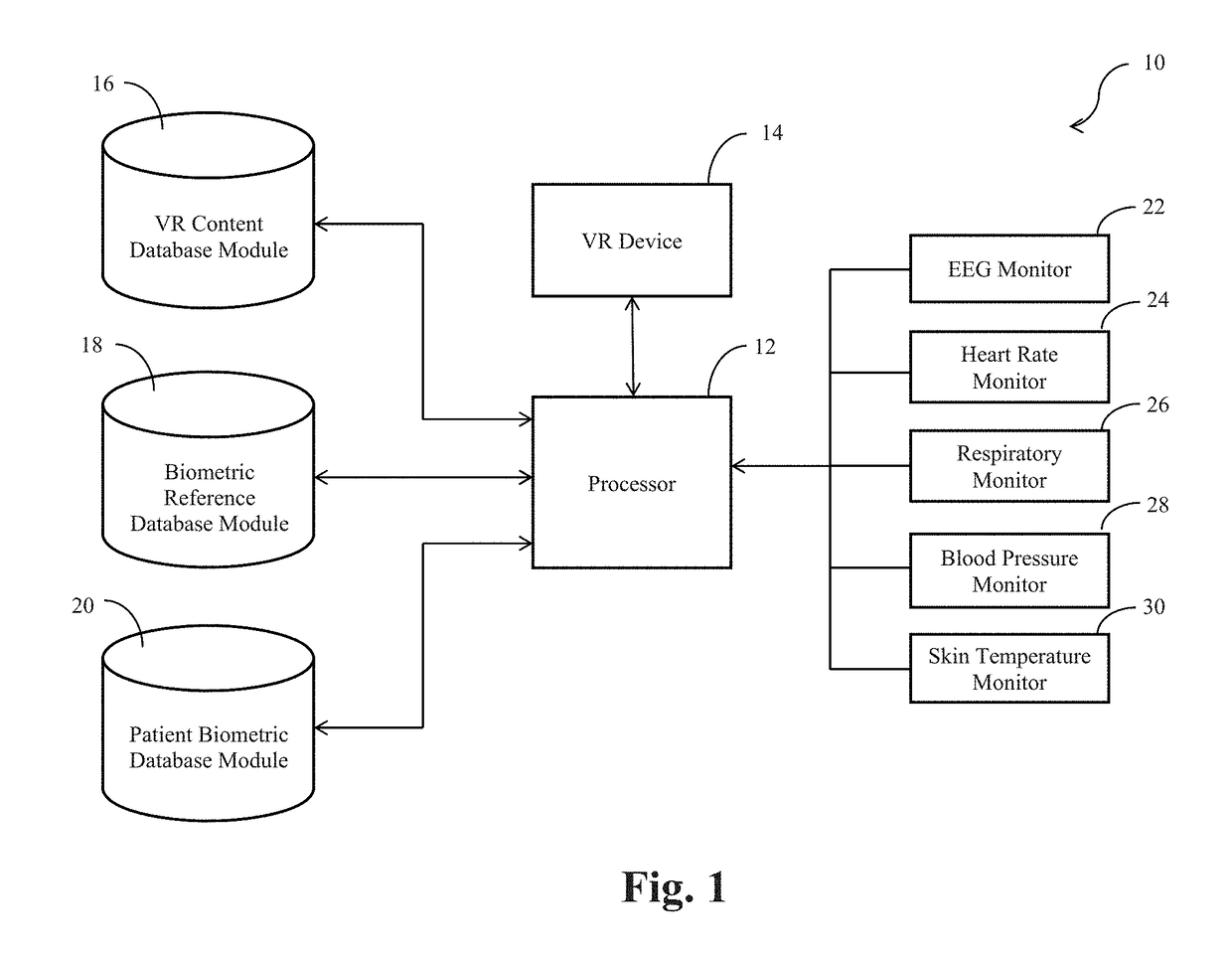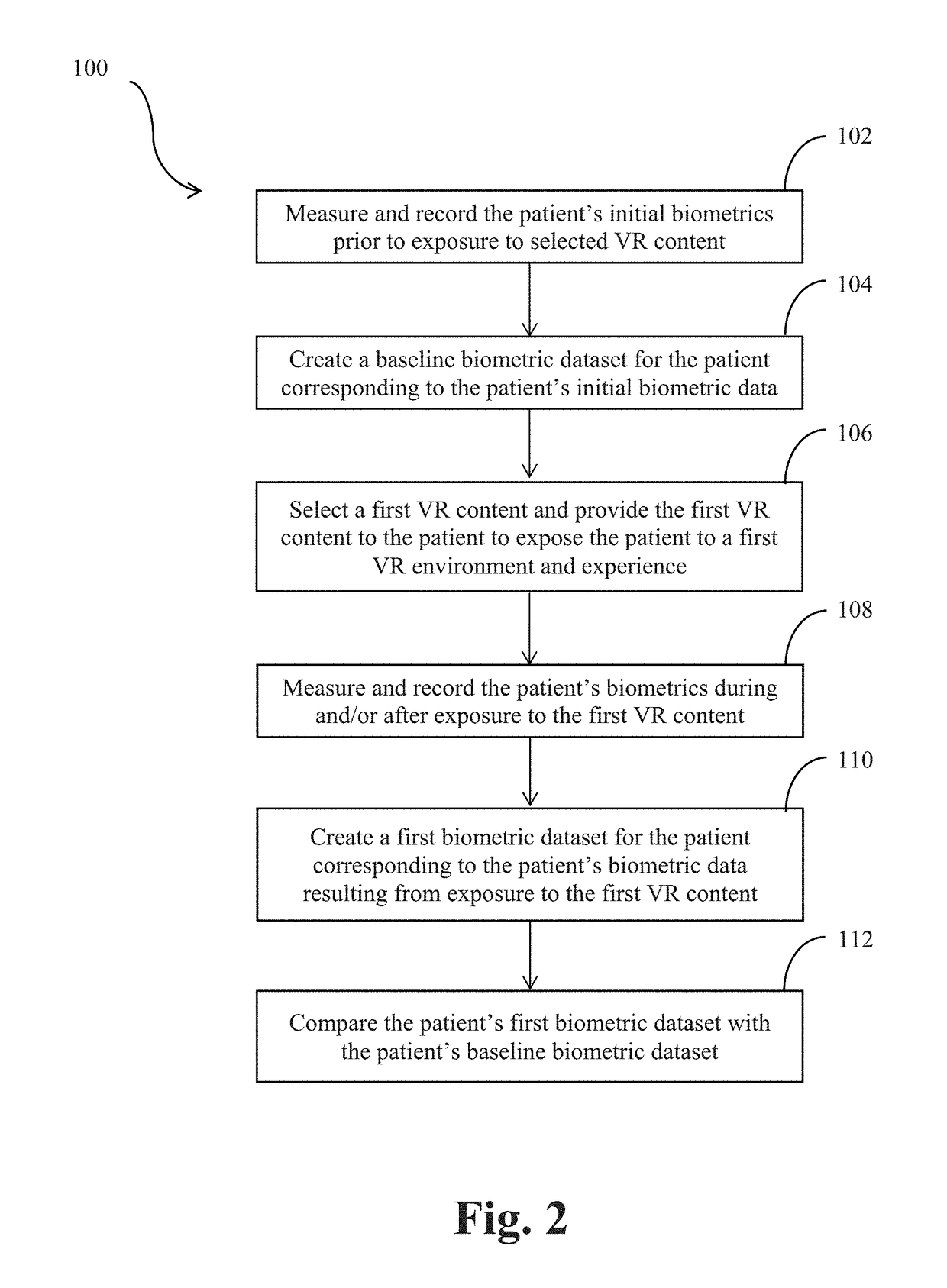System and method for modifying biometric activity using virtual reality therapy
a biometric activity and virtual reality technology, applied in mental therapies, instruments, applications, etc., can solve the problems of poor patient education, cost, access, etc., and achieve the effect of positive changes in the user's biometrics
- Summary
- Abstract
- Description
- Claims
- Application Information
AI Technical Summary
Benefits of technology
Problems solved by technology
Method used
Image
Examples
case study # 1
[0066]Case Study #1—Virtual Reality Meditation: Changes in Brainwave Activity and Heart Rate Variability
[0067]Popular articles that discuss brainwaves in relation to states of consciousness often simplify matters by indicating that there are four types of brainwaves: delta, theta, alpha, and beta. Delta, theta, and alpha can all be considered “slow” brainwaves. When they are dominant, the brain is often in a more relaxed or quiet state. Beta and brainwaves faster than beta, such as high beta or gamma, can be considered “fast” brainwaves. When these are dominant, the brain is active and engaged. We need these brainwaves to be flexible and fluid, shifting and changing with whatever task we give our brain. For example, when it is time to rest, we expect slow brainwaves to increase and fast brainwaves to decrease. When we are balancing a checkbook or making an important decision, we expect the opposite pattern.
[0068]By measuring brainwaves (i.e., biometric data) before and after a speci...
case study # 2
[0076]Case Study #2—the Impact of Virtual Reality Mindfulness Meditation on the Brain
[0077]In the second case study, the subject was a 16-year-old male with a history of anxiety following a mild traumatic brain injury. Prior to beginning the study, the subject was oriented to virtual reality by watching a three-minute VR news story.
[0078]EEG biometric data was recorded in 19 channels using an EEG monitoring device, as in case study #1, before, during, and after the subject watched a five-minute mindfulness in nature VR experience (i.e., selected VR content) created by StoryUP™ VR.
[0079]When comparing the EEG biometric data during the experience to the baseline biometric data, the largest changes were observed in delta brainwaves (1-4 hz). Delta is a cluster of the slowest brainwaves. Increases in delta are generally accompanied by a decrease of conscious thought or, put another way, a “quieting of the mind.” Several changes in the subject's EEG biometric data occurred during the VR ...
case study # 3
[0082]Case Study #3—can Virtual Reality be Used to Develop Empathy and Compassion?
[0083]In the third case study, the subject was a 68-year-old female. EEG biometric data was recorded in 19 channels, as in the prior case studies, before and after the subject watched a five-minute story about a group of individuals in Zambia that did not have the use of their legs (i.e., selected VR content). In the story, these individuals are presented with hand crank Personal Energy Transportation (PET) carts, allowing them mobility they have not experienced in many years. The story was created by StoryUP™ VR and is designed to increase empathy and compassion in the viewer. After completing the EEG biometric data recordings, the subject was asked to write a few statements about what she was feeling or thinking after the experience. The subject wrote the following list:
[0084]Sadness
[0085]Hope
[0086]Despair
[0087]Gratitude
[0088]Sympathy
[0089]Wanting to help
[0090]Sense of community
[0091]When comparing t...
PUM
 Login to View More
Login to View More Abstract
Description
Claims
Application Information
 Login to View More
Login to View More - R&D
- Intellectual Property
- Life Sciences
- Materials
- Tech Scout
- Unparalleled Data Quality
- Higher Quality Content
- 60% Fewer Hallucinations
Browse by: Latest US Patents, China's latest patents, Technical Efficacy Thesaurus, Application Domain, Technology Topic, Popular Technical Reports.
© 2025 PatSnap. All rights reserved.Legal|Privacy policy|Modern Slavery Act Transparency Statement|Sitemap|About US| Contact US: help@patsnap.com



